BLOG
|
|
WEEK 12 HALF MARATHON 2019 TRAINING PLAN STARTS. Runners and walkers, your long distance workout is into double digits this week! Can you believe yourself? Wow! This calls for a celebration AND A FOAM ROLL.
You might consider performing an abbreviated foam rolling session on the areas that tend to bother you BEFORE running or walking, and a full session afterward. You can foam roll the next day as well, if still feeling a bit sore. The bit of advice about pre-run foam rolling was provided by a trainer who at the time, was coaching a championship high school cross country team. Tim Broe now heads training at Saucony™ shoes company's Freedom Track Club, which is dedicated to developing Olympic running hopefuls. It's not a practice prescribed only for old people. Congratulations for all the progress made this far. RUN & MOVE HAPPY! https://www.fleetfeet.com/blog/essential-gear-you-need-to-start-running http://blog.saucony.com/launch-of-freedom-track-club/ NOTE: the RESOURCES page has FOAM ROLLING links, including "5 Minute Warm-up With A Foam Roller " by Shane Barnard for Under Armor's MyFitnessPal.com. http://blog.myfitnesspal.com/5-minute-warmup-foam-roller/
0 Comments
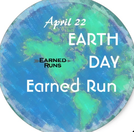 THE 22ND OF THE MONTH IS EARTH DAY, BUT THE OFFICIAL DESIGNATION OF A 24 HOUR PERIOD DOESN’T mean that we need restrict our environmental love to that one day. Why not make April 1 the first of a 3-week period long when, after your walk or run, you pick-up a few pieces of trash. Every day until Earth Day. To show respect for the environment and to acknowledge potential benefits that might be gained from routinely experiencing the beauty of nature during outdoor exercise The 'gear' consist simply of a small bag and protective gloves that can be stowed in a pocket. Pull these items out when ready for a cool down session at the end of a run or walk, and snag a few pieces of litter each time you are exercising. I’ve learned that the area closest to my finish point quickly gets cleared of junk. To avoid experiencing a lack of ‘work’ I've varied my run/walk course on trash pick-up days to cover different sections of my immediate neighborhood. Weekends offer the best opportunities because there's often less of a time crunch and the area of pick-up can extend beyond the usual finish zone. Plan to snap a photo to document each effort. In the last couple years, my daily trash hauls did not appear as impressive as I had hoped they would be. By collecting the bags and building a small pile over a couple weeks, the picture at the end of the effort was closer to the image I had in mind when my personal environmental cleanup initiative started. I run/walk in the area of a county and a state park, so perhaps my workload is different from what might be had in urban areas that are highly utilized by many more people each day. It’s possible a large bag could be quickly filled in some venues. The point is that even a single small effort shows love to the earth. A bigger effort might be made by gathering friends and family to join up. But collecting even a small bag on a solo workout impacts the environment. If we each took care of our own running/walking neighborhood, the cumulative effort could be huge! RUN & MOVE HAPPY! https://nationaltoday.com/earth-day/ https://journals.humankinetics.com/doi/abs/10.1123/jsep.2016-0220 https://www.sciencedaily.com/releases/2011/02/110204130607.htm Previous Earth Day BLOG post April brings this huge running event that historically markS the beginning of marathon competition in American cities. Earned Runs will present several ‘Boston’ themed blog posts in advance of the race. This one starts the series; it’s one that originally was posted in 2017.
There may be other research that addresses the topic of bone strength, how to build it, AND WHETHER RUNNING HURTS OR HELPS, but work discussed below is the most helpful to runners that I've found. The article, “Does Running Strengthen Bone?” by French scientists A Boudenot, Z. Achiou, and H Portier investigates the contribution of running to bone strength. It begins by discussing general principles. A strong skeleton, it informs readers, is one that “will be less prone to fractures”. Bone strength can be defined by qualitative and quantitative measures, including the determination of bone mineral density (BMD), which indicates the amount of calcium, phosphorus, and other minerals incorporated in bone. BMD is commonly used for this purpose, as it negatively correlates with fracture risk (a low BMD is associated with higher risk) in certain populations. [There isn't total agreement that BMD is the best measure of bone strength, but is used clinically to asses fracture risk]. The paper describes in detail how bone becomes stronger physiologically. “Like a muscle, a skeleton needs exercise to be strengthened. It is estimated that only 30%–50% of potential bone mass can develop in absence of exercise… In fact, it is both mechanical stresses acting directly on bone (ground impact, pulling of muscle attachments) and biochemical agents transported by the blood (hormones, cytokines) that allow bone anabolism”, another word for construction. Theoretically, the authors say, physical activity is recommended as a strategy to “augment” (increase) bone mass. Female practitioners of sports that are the most “athletic”, like “body building, judo, and rugby”, and gymnastics and tennis are more likely to have higher bone mineral density (BMD) than non-practitioners, they report. This kind of information “suggests that sports requiring the movement of heavy loads or that expose skeleton to repeated impacts stimulate bone formation”. “In contrast, endurance sports that primarily use the aerobic energy system (walking, running) result in smaller bone mass gain because the body is not subjected to high impacts.” YIKES! This information is scary to me, because exercise prescribed for adults as we get older mostly involves aerobic training. Even combining aerobic work with resistance exercises doesn’t seem to greatly improve BMD or prevent BMD decrease, the authors indicate. What’s the answer? The scientists say NOT to abandon aerobic training as it helps prevent cardiovascular, metabolic, and other diseases like hypertension, obesity, diabetes, and even some cancers. This advice should especially be applied in industrialized countries where people lead mostly sedentary lives. Best to “maintain these good habits with some ‘OSTEOGENIC’ modifications” to they advise, “by the integration of interval exercises and downhill running or walking”. WOW. The same INTERVAL TRAINING that COACHES have been instructing runners to perform to build stronger muscles works to strengthen bones! It makes sense, because, as explained above, the mechanical pulling action of muscles at sites of attachment to bone plays a role in the strengthening process. Larger stronger muscles will exert a greater amount of pull on the bones to which they are attached. More good news is that interval training does triple duty when it comes to health. The scientists say “it’s been observed that interval training has SUPERIOR effects” compared to “CONTINUOUS ENDURANCE TRAINING for the health of elderly suffering from cardiovascular diseases." Why do these researchers recommend high intensity interval training, characterized by alternating work and recovery phases, over continuous running? Bone cells called osteocytes are initially stimulated when high intensity impact loads are sensed, but soon become fatigued, they say. Animals studies show that “5-10 minutes of running offer the same effects on bone as 1 hour of running”. “For a given exercise, adding a few seconds of recovery several times in the workout increases the positive effect on bone by 5-8 fold.” There aren’t any human studies of the same type, however. DOWNHILL RUNNING was also prescribed to increase bone strength. How does it do this? Two ways. First, as stated in the second paragraph of this post, GROUND IMPACT is a MECHANICAL factor known to play a role in building bone. Downhill running increases ground reaction forces, and thus “offers an opportunity” to build bone strength with each step. Second, also stated in the second paragraph, BIOCHEMICAL factors are known to play a role in bone construction. Downhill running causes the release of a certain biochemical factor into blood that stimulates bone formation. Additionally, the eccentric contraction of muscle that characterizes downhill running causes a decrease in a biochemical inhibitor of muscle and bone formation (allowing increased formation of both to occur!). The authors of this paper conclude by reminding readers “that bone is a living tissue that needs exercise to remain strong”. Rather than abandon or interrupt existing habits of aerobic exercise, which provide benefits to cardiovascular and metabolic health, they recommend adapting running and walking such these activities become OSTEOGENIC (bone creating). This means “integrating rest intervals to prevent bone fatigue” and incorporating “downhill exercises to increase ground impact forces and eccentric muscular work”. HOW DOES “BOSTON” BUILD BONE? It is famously known to be a downhill marathon, with a net elevation drop of 477 feet. Of course there are other downhill marathons, and some wonder if the increased number offered is due to an increased desire by runners to qualify for Boston. Because preparing for a downhill marathon involves downhill training sessions, it certainly could be helping to build bones that are "BOSTON" STRONG! RUN & MOVE HAPPY! http://www.nrcresearchpress.com/doi/abs/10.1139/apnm-2015-0265 http://www.clevelandclinicmeded.com/online/casebased/ccjm/compression-fractures-normal-bone-density/media/CCJM-v76-6-331.pdf http://strengthrunning.com/2011/04/running-downhill-boston-marathon/ http://www.findmymarathon.com/marathon-news/ten-options-for-downhill-marathons/ IT WORKS “EVERYTHING ABOVE THE WAIST” says Lauren Mazzo in her shape.com piece that describes just one exercise. For those who have yet to add upper body strength work to their training regimen, the dumbbell overhead press can be an easy beginning. To overcome inertia that may be keeping you from picking up a pair of weights, promise yourself that the only effort to be made is just this one exercise.
The article includes a video that demonstrates the exercise's simplicity and the muscles targeted. It is a relatively uncomplicated movement that doesn't take much thought, so I love it. Master this one move, perform it at least once a week, preferably two to three times, and notice the gains in strength. Before long you’ll be searching for another exercise, possibly to improve lower body power, then another to make up a brief routine. And you will be on the way to loving your stronger self! RUN & MOVE HAPPY! https://www.shape.com/fitness/videos/how-to-do-perfect-dumbbell-overhead-press WEEK 11 HALF MARATHON 2019 TRAINING PLAN STARTS You should be settling into a rhythm by now, but you’ll notice a few changes on the horizon.
The WALK schedule includes 1 short ‘easy’ walk + 2 longer ‘easy’ walks + 1 high intensity interval training (HIIT) that’s been bumped to a duration of 36 minutes this week + 1 long ‘brisk’ walk. On the next 2 Tuesdays there’s still an option of a hill repeat workout, but it disappears in April, replaced by walks of decreasing duration as the long weekend walks increase to distances above 10 miles. After hitting 13 miles on April 21, the taper will begin. IMPORTANT WALKER NOTE: If you are planning to cover the 13.1-mile half marathon distance just to finish in a custom solo personal race, you can treat April 21 as your official event day and be done with training! If you’re registered for an organized event later in April or May, you may wish to continue to build mileage then follow the taper. The Earned Runs plan adapts a Hal Higdon program that stops at 10 miles /12 weeks. The ER plan is taking competition-minded walkers out to the actual distance. To gain confidence from surviving the full distance, but at a slower pace. In training you’ll be walking more easily with breaks and stops as needed. On race day, in the company of other competitors, ER thinks you’ll push yourself to a higher intensity, and for safety reasons to possibly avoid injury, is offering the opportunity to train the actual distance. However, this strategy is not based on the advice of an expert or another plan; information could not be found that supports or refutes it. The RUN schedule includes 1 recovery walk + 3 shorter distance runs + 1 long run, each week. The types of shorter distance runs have not been specified up to this point, although 1 hill repeats session has been offered as an option on Tuesdays. In week 13 there will be an option of a tempo run on Thursdays. However, runners can individualize one or both sessions now that all work is focused on the half marathon. Remember, this plan is for beginners or those getting back into running races who did not have one available to them for this distance. Advanced runners who wish to increase their speed to a faster pace and finish with an improved time will have scanned this plan and likely realized it was not going to help with that. They will have used a plan provided by event organizers if formally registered for a race, or found one online that promised to prepare runners for their “best finish time ever.” Beginners can choose to run hill repeats on Tuesday or run easy steady continuous speed run that day. They have 3 options (see below) for running the shorter distance session on Thursday. #1 is for runners who only wish to “finish” the 13.1K distance and are not concerned with time. #2 is for those who wish to finish strong but aren’t focused on gaining speed. #3 is for runners who wish to push their limits a bit more, and test themselves in the upcoming event.
Jenny Hadfield offers 4 tempo runs for runners who are new to them in an article for Runnersworld.com, “Four Tempo Workouts for Runners”. Included are warm-ups and cool-downs, which are a must! You are roughly running 2-4 miles, because the exact distance will vary by running pace. With increased running intensity in certain segments, the swap with a 3-mile run would be fine, and suitable for the Thursday 3 mile run, especially if you're not running hill repeats. If you are new to racing, the “high-five” tempo workout listed first might help you deal with one aspect of competition, the speed-ups and slow-downs normally experienced in a race if you’re not a leader at the head of the pack. For example, you occasionally might wish to speed up and pass a group that has slowed down in front of you, then dial it back a bit after the harder work. Or tackle a long, low hill that requires more effort, after which you take a little breather by easing up. When you are training by yourself or with friends you or they control the pace. In a competition, you and your running partners will not always be in control as others surge or fall off their pace around you, which will prevent movement in a straight-line direction If not ready for it mentally and physically, it could throw off your race plan. Have fun experimenting with these shorter runs soon. There’s enough time now, before the race, to try the negative split, the tempo run, or both, and revert to the old comfortable routine if the change-up doesn’t work for you. RUNNERS and WALKERS, recognize the progress you've made and be proud. RUN & MOVE HAPPY! http://www.runnersworld.com/tag/tempo-run http://www.runnersworld.com/ask-coach-jenny/four-tempo-workouts-for-runners A great deal of the nutrition discussions online and written about this blog are about protein. The role of protein in building lean muscle mass gets a lot of attention. So, when an article surfaced that sings the praises of breads it seemed a breath of fresh air to be joyfully fanned and inhaled by all. The author Markham Heid’s piece on Medium.com reminds readers that bread in general, “not just the whole-grain types” should be “considered a major component of Mediterranean-style diets, which have repeatedly been linked to health and longevity”. He goes on to report that studies which “specifically looked at bread in the context of these diets have found that people who eat the most whole-grain breads - six slices or more a day - are the least likely to be overweight or obese.” Heid describes scientific evidence regarding the benefits of eating breads and cereals including a discussion about whole grain versus white. One of the highlights is an easy formula that can be employed to determine which whole grain products are the most “healthful”. It almost stands alone as a reason the read the full article. “You’re looking for breads that have a carb-to-fiber ratio lower than 10:1.” Another article highlight comes at the end. It’s a delicious quote: “To sum it up, there aren’t many compelling reasons to single out bread as one of your dietary nemeses.” Since this is the weekend, there are no good reasons to be spending time reading blogs online when outdoor fun and work activities can be enjoyed. Breeze through the Heid article now, and perhaps put it aside to savor the details later. RUN & MOVE HAPPY! https://medium.com/s/the-nuance/scientific-case-for-eating-bread-health-diet-f2a2c1bf74bf JUST WHAT FAST CARDIO IS, AND ITS BENEFITS AND DRAWBACKS are explained in a SHAPE.com piece by Gabrielle Kassel. If you’ve ever skipped a meal before a cardio (cardiorespiratory fitness building) workout, most often breakfast according to one of the experts referenced by Kassel, you may have experienced it.
The overnight period of time between meals can encompass an 8-12 hour interval without nourishment. The most common situation that results in fasted exercise occurs when the decision is made to skip eating upon waking to avoid a delay of approximately 30 minutes before exercise is comfortable and do-able. A fasted state can be achieved in much shorter time, says one of the article’s experts, in only about 3-6 hours, after the body has finished processing the most recent meal or snack, depending on volume and content. Thus, deciding to spend a lunch break exercising rather than eating, or to exercise in the evening after work are other scenarios for ‘unintentional’ fasted exercise. For others who exercise hungry ‘on purpose’, the motivation is the promise of fat burning. The article’s experts explain how the practice might promote fat-burning, and its physiological advantages and disadvantages. Most helpfully the circumstances in which the best exercise results might be achieved are described. Overall the advice is to avoid this practice partly because the experts feel there are better exercise tactics, like high intensity interval training, to burn fat. Working out hungry will decrease the level of intensity at which exercise will be performed, they maintain. However, not all exercise is carried out at high intensity for several reasons. Recovery days will include lower-paced activity for injury prevention. Morning and evening walks might be added, especially with improving weather conditions, to simply enjoy the outdoors. The promise of lessening body fat might prompt more than a few people to get moving when they might otherwise stay on the sofa. In spite of the discouraging tone, it’s a great article for those who work out in this state whether out of convenience, necessity, or with fat-burning as the goal. The information provided indicates that although fat is the intended body fuel utilized during fasted cardio, there’s no guarantee muscle tissue won’t be sacrificed says Kassel’s experts. That’s bad news for fitness enthusiasts who strength train to gain lean muscle mass in this state The key move to avoid consuming muscle tissue, the article explains, is to set workout intensity at a low easy level and save harder sessions and strength work for other times. Matt Fitzgerald offered additional guidance in a recently updated running.competitor.com, piece, “An Easier Way to become A Fat-Burner”. In it he reports the results of a scientific study (FNIS) in which athletes improved performance with a diet high in carbohydrates that included a period of severe carbohydrate deprivation (carb-fasted state). Importantly, hard training sessions were timed to follow the high carb ingestion period, and easy training sessions were timed to occur after the overnight carb-fasted-sleep period. He referred to this plan as a “train hard high/sleep low/train easy” regimen. Although lean muscle mass was not specifically discussed, it seems unlikely that athletic improvements would have been seen in the research participants if the 21-day diet had caused significant muscle tissue to be lost because it had been consumed for fuel. The FNIS study appears to have devised a protocol by which “high” carbohydrate-derived energy successfully drove “hard” training sessions that resulted in performance gains, and “easy” training sessions triggered fat oxidation after an overnight (sleep) “low” carbohydrate fast. According to Fitzgerald, similar results have not been achieved in other high-fat, low-carb diet studies. Unfortunately, the complicated nutrition and exercise plan, as Fitzgerald observed, does not conform to common athletic training practices and would be very difficult to replicate outside of a research setting. So, as he promised in the title, the sports nutritionist helpfully laid out an alternative “easier” plan by which everyday athletes could hope to improve performance and burn fat during fasted cardio exercise: simply schedule a long low-intensity workout before breakfast (or after a light carb-free breakfast). Fitzgerald suggests alternating this protocol with the FNIS protocol, which he describes in greater detail in the article. The Fitzgerald plan makes passing reference to having coffee in the morning. However, caffeine and coffee have been investigated and found to stimulate fat oxidation (green tea as well). A 2017 small Japanese study of 7 men in their mid-twenties demonstrated that fasted caffeine ingestion, one hour before three10-minute bouts of low intensity aerobic cycling exercise (separated by 10-minute recovery periods) resulted in greater fat oxidation after exercise than fasted caffeine ingestion + a single30-minute session, and similar exercise sessions without caffeine (fasted water). The research was carried out in a small sample of healthy non-obese men. But this evidence suggests that even low intensity interval exercise that follows an overnight fast without caffeine enhances fat-burning, but that an extra boost can be experienced with caffeine. Thus, it seems the Kassel and Fitzgerald articles and the scientific literature offer complementary advice for effective fasted-cardio fat burning. Low intensity aerobic exercise, especially in intervals separated by recovery periods + a fasted/carbohydrate-deprived state + caffeine may optimize this process in some persons. Tolerance to this regimen likely differs between individuals. As when trialing any new dietary-training practice it is best to determine whether it is safe for you and to always prepare for a problem. I have completed most of the shorter distance aerobic workouts of my running and walking career in a fasted state after a few cups of coffee, not to burn more fat but because eating leaves me feeling full for 30-60 minutes or more. I’ve not experienced health issues but as a precaution have carried graham crackers, cheese sticks, peanut butter packs, and even Twizzlers in case of an emergency. In training for endurance races I have taken care to eat breakfast before long weekend runs and to ‘practice’ the specific pre-race nutrition strategy I planned for the event. After reading the recommendations of experts and the results of research, I now am aware of the situations in which fasted training is beneficial or possibly harmful, and the need to be more careful with specific workouts to preserve lean muscle mass. Also, in searching I learned that enjoying my morning black coffee and evening green tea can be health blessings! RUN AND MOVE HAPPY! https://www.shape.com/fitness/what-is-fasterunning.pocketoutdoormedia.com/an-easier-way-to-become-a-better-fat-burner_146746d-cardio-benefits https://running.pocketoutdoormedia.com/an-easier-way-to-become-a-better-fat-burner_146746 https://www.researchgate.net/publication/280243071_Combined_effect_of_coffee_ingestion_and_repeated_bouts_of_low-intensity_exercise_on_fat_oxidation [accessed Mar 16 2019]. https://www.focusfitness.net/how-to-stop-your-body-from-storing-fat/ https://www.healthline.com/nutrition/coffee-increase-metabolism#section2 https://www.jstage.jst.go.jp/article/jnsv/62/3/62_141/_article https://www.webmd.com/food-recipes/ss/slideshow-coffee-tea-benefits INSTEAD OF WAITING FOR SUMMER TO ARRIVE TO FOCUS YOUR SIGHTS ON A FASTER RACE FINISH TIME, LONGER STREAK DURATION, OR HIGHER MILEAGE DISTANCE consider framing a goal in steps number. Take full advantage of the season of “brightening” and start now, at the beginning of spring!
Two articles on this topic help explain the difficulties associated with accomplishing the extreme feat of covering 100,000 steps in one day. That’s not to say all challenges must reach for this huge number. Determining an appropriate goal will depend on an individual’s previous “Best Day” record of steps taken, while purposefully walking or running, and the length of time available for training for a new to-be-set record level. The first piece was written to documentthe running/walking of 100,000 steps by a 38-year old man, Maxim, and was published in a 2016 InkIn.com blog. Maxi’s story informed a 66-year old man, who was inspired to test his endurance after reaching the age milestone when Medicare insurance coverage became his reality. David Paul Kirkpatrick’s articlefor BetterHumans.coach.me was run in January 2019. Each man considered his individual effort to be an ordeal and a huge physical accomplishment. It was surprising that Maxim did not follow a formal training program that gradually increased steps to prepare for the task, in spite of his acknowledging that the number of steps was comparable to running or walking an ultra-marathon. Wisely, Kirkpatrick had read Maxim’s piece and decided to break down his step challenge into 4 milestone events: 20,00; 40,000; 70,000; and 100,000 steps. He prepared by walking 10,000 steps most days (about 4 miles for my stride length) in the intervening weeks. His training plan was painstakingly conceived seemed to work well for the purpose of readying his mind and body and building stamina. Fitzpatrick’s plan also did not involve progressively increasing step number each week. Both men probably were on the right track with regards to preparation, though. Marathon training usually takes runners to a maximum long-run distance of about 20 miles before the race, even though the event is a 26+ miles, because the full distance is so physically punishing that adequate recovery would not allow continued training or even participating in the competition for a month. The scheduling of additional big step days (comparable to long weekend run days) before the actual 100K step attempt might also have been too punishing. Kirkpatrick describes each step milestone. He admitted that unlike 20K steps, the 40K day left him exhausted, and that lack of attention to the cautionary details outlined by Maxim, about avoiding obstacles and activities that cost more energy, was a mistake. His more organized preparation and tactics for the 70K milestone walk seemed to pay off as he reported it went without incident and without the need for an excessive recovery period. The full stories of each of the 2 ‘steppers’ are amazing. However, Kirkpatrick’s recounting is MUCH MORE than a collection of journal entries about completing a fitness challenge. He weaves in the story of growing up as an ‘intentional dreamer’, his nightly construction of an arrow of imagination to propel him toward the future and a career. The retired Disney movie exec explains how he used this practice to imagine himself as capable of the physical 100K-step task ahead. His philosophy of life is revealed too and kindly, he tells readers how we might also become intentional dreamers. I loved visualizing this part of Kirkpatrick’s story. Because the Earned Runs logo includes a right-pointing ARROW to imply directional motivation and movement toward a goal, and because Earned Runs encourages individuals to identify and train to meet personal athletic challenges that suit their lives and interests. Kirkpatrick’s effort encompassed several months of increasingly difficult exercise. He trained and strategized as an athlete, without needing the affirmation of a social media audience or ‘tribe’. If looking for a do-able ‘brightening’ challenge, consider today, the first day of the Spring season as the beginning of your planning period for a steps challenge. After working out the details while heeding the advice of both Maxim and David Paul Kirkpatrick, get on your feet and start taking steps. Consider using intentional dreaming along the way. RUN & MOVE HAPPY! *You may want to employ other training ‘tools’ to avoid injury: a mobility routine stretching, foam rolling, and strength work. Checkout the Earned Runs RESOURCESpage for ideas. https://betterhumans.coach.me/how-to-walk-100-000-steps-in-one-day-5087adbd4569 https://www.inkin.com/blog/en/How-To-Make-100000-Steps-In-1-Day https://www.verywellfit.com/why-is-my-longest-training-run-20-miles-2911436 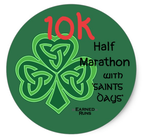 WEEK 10 HALF MARATHON 2019 Training Plan You are officially entering the second half of the plan this week! Congratulations for making it this far! There are no more ‘tune-up’ races after this last weekend of St. Patrick’s Day-themed events. You’ll be looking ahead toward your goal half marathon event. Runners who completed a ‘Saints Day’ 10K run, will have an 8mile (or 80 minute) run scheduled for Saturday. Walkers who completed a 10K will cover 7 miles. For both groups, it may be the longest training distance ever. Wow! Remember it’s especially important to foam roll before, after, or before AND after covering high mileage workouts, and perform the other warm-up and cool-down routines. Continue with strength work to prevent injury and help improve endurance. If you’re outdoors during this session, take note and enjoy the first full weekend of Spring (March 20 is the first day). The song birds may be starting to return to your region. I initially was amazed to hear one sweet tune a few weeks ago, doubting that it was real. Over the next week there were a couple more instances in which birds were chirping and singing. For me, having the silence of winter broken in this way is reason to rejoice and motivation to get out before or just after daybreak. Consider foregoing listening to music playlists to enjoy this special spring and summer experience. RUN & MOVE HAPPY! *NOTE: to learn more about birdsong, Birdwatchersdigest.com has a free download that may be helpful. https://www.birdwatchersdigest.com/bwdsite/bird-identification-identify-birds-by-ear.php THE RACE IS NOT UNTIL AUGUST 11 BUT MAKING PLANS NOW CAN SAVE MONEY AND HELP SECURE A PLACE TO STAY. By registering early as an individual there’s sufficient time to recruit other family members and friends to join the annual rivalry and obtain discounted hotel room pricing.
Summer is a busy time in the out-of-doors Chicago. Lollapaloosa, a music festival held in Grant Park that features numerous top name and up and coming entertainers, will run August 1-4 this year, the week before the race. The Air and Water Show, another popular summer festival, is scheduled from August 17-18, the weekend after the race. There are enough museums and city attractions to tour and experience that some may consider staying more days than just the race weekend. Best to reserve accommodations early especially if cost is a concern. The B1G 10 BTN 5K race was recently cited by BibRave Best 100 Races in America, being voted #1 in the 5K category in 2018. The event is unique; fans of all the Conference universities are invited to show school spirit and challenge fans of rival schools to best each other’s turnout and results. I ran the first race, skipped the next 6 years, and came back to register for and walk “in spirit” last summer. Perhaps this summer I can participate in person again! The 5K is promoted as a run/walk. Additional details about walking are not yet provided on the registration and home pages. For those whose university affiliations or sentiments have a home in the B1G 10, this event could be an attractive way to generate excitement for a reunion. Are there other all-conference events like this one? Earned Runs would love to highlight it. RUN & MOVE HAPPY A previous Earned Runs post featured this event in 2018. https://btnbig10k.com/ https://www.bibrave.com/thebibrave100/2018 https://www.lollapalooza.com/ http://www.airshowstuff.com/ A SLIDE SHOW FROM WEBMD.COM Identifies 10 foods possessing anti-inflammatory properties that may help alleviate pain. For athletes, pain which does NOT arise from bone fracture or result from injuries requiring surgery is often the result of problems arising in muscles, connective tissues, or joints. Another WebMD.com article on common running injuries reveals that 7 of the 10 listed involve pain/inflammation of tendons, ligaments, muscles, and joints.
To preemptively prevent pain and inflammation, some athletes have tried pre-treating themselves with over-the-counter pharmaceutical remedies such as non-steroidal anti-inflammatory drugs (NSAIDs). However, because of significant side effects associated with short and long-term NSAID use, medical cautions against this practice dampened enthusiasm. Thus natural alternatives, like those presented in this slideshow, may appeal to regular exercisers who hope to avoid pain associated with the minor tissue damage generated by everyday workouts. The WebMD.com slideshow, reviewed by Melinda Ratinini DO, MS, includes some food/spice items that have traditionally been seen as having pain relieving potential, like ginger and the capsaicin in hot peppers. Other foods on have list have gained fame for their anti-inflammatory properties: blueberries, tart cherry juice , and turmeric. Other foods have the reputation of being heart-healthy, but mostly on the basis of their containing omega-3 fatty acids with anti-inflammatory benefits: extra-virgin olive oil, salmon, and red wine. The remaining two items were a surprise: pumpkin seeds and mint Pumpkin seeds, or pepitas, are on the list because they are high in the essential mineral, magnesium, but also qualify to be on it for having omega-3 fatty acid-related inflammation fighting capability. Mint has long been a home-remedy for an upset stomach; limited medical research indicates that mint essential oil from the plant Mentha piperitahas anti-oxidant activitiy. An online search for the plant H. crenata mentioned on the slide page identified preliminary research in 2009 in which pain relieving and anti-inflammatory properties were suggested. All 10 foods fight inflammation. Why does fighting inflammation associated with tissue injury help with pain relief? “When inflammation occurs, chemicals from the body’s white blood cells are released into the blood or affected tissues,“ another WebMD article explains. “This release of chemicals increases blood flow to the area of injury” which leads to classic signs of inflammation: redness, swelling, warmth, pain, and possibly a loss of function. Some chemicals released by the white blood cells directly irritate nerves to cause pain. In addition, the tissue pressure generated by swelling can also compress nearby sensitive nerve endings which “sends pain signals to the brain”. Thus, decreasing some inflammation can help to limit pain. Experts are careful to caution that inflammation is an important body process when it comes to injury; without it there is no healing. It turns out that powerful pain relieving anti-inflammatory medications like NSAIDs will help at the time of acute athletic injury but may not do so if used long-term especially in conditions in which inflammation is not a significant contributor to pain. Which is a further encouragement to find other ways to fight inflammation on a daily basis.. Perhaps long-term consumption of foods that fight day-to-day body inflammation may deliver a ‘safe’ amount of pain-dampening substances for the kind of day-to-day injury that the body experiences with physical training. Perhaps nutritional pain-fighting will prevent minor injuries from accumulating and ward off some of the common injuries reported by runners and other athletes. A shot of tart cherry juice will not instantly take away the pain of an acute ankle strain. However, daily doses of this juice or regular intake of similar anti-inflammatory foods may keep a mild problem, like tendinitis, from reaching a severe stage before training corrections and other remedies can be applied. Other serious disease processes, like cardiovascular disease and cancer, have been linked to chronic, low level, body-wide inflammation. The best reason to increase consumption of ‘pain-fighting’ foods may be to maintain general health, which may help us continue enjoying athletic participation over many years, if not completely alleviate the pain of injury. RUN & MOVE HAPPY! https://www.webmd.com/pain-management/ss/slideshow-foods-fight-pain? https://www.webmd.com/fitness-exercise/guide/running-injuries-causes-prevention-treatment#1 https://my.clevelandclinic.org/health/drugs/11086-non-steroidal-anti-inflammatory-medicines-nsaids https://www.webmd.com/arthritis/about-inflammation#1 https://www.ncbi.nlm.nih.gov/books/NBK279298/ https://www.ncbi.nlm.nih.gov/pmc/articles/PMC4606594/ http://yourwellness.guide/2017/07/25/20-foods-high-in-magnesium/ https://www.livestrong.com/article/411227-flaxseed-vs-pumpkin-seed/ https://www.nhs.uk/news/food-and-diet/mint-tea-tested-as-painkiller/ https://www.rheumatologynetwork.com/pain/do-nsaids-impair-healing-musculoskeletal-injuries https://www.nextavenue.org/inflammation-alzheimers-heart-disease-cancer/ SMALL MUSCLE STRENGTH IMPROVES STABILITY AND BALANCE TO EXTEND LARGE MUSCLE ENDURANCE Samantha LeFave answers a question in an article for SHAPE.com that perhaps might only arise when a person takes an aerobic activity fitness class that incorporates dumbbell weights.
If we lift weights we can expect to experience an increase in muscle strength, right? Not necessarily says LeFave, who explains the difference in functional terms and declares that workouts building both should be included our weekly routines. In a nutshell, LeFave indicates, having muscular endurance allows us to continue performing activities of daily living and aerobic exercise for longer periods of times before fatigue forces a halt. “The more endurance you have, the harder you’ll be able to go for a longer distance”, explains one of her referenced experts, whether it’s playing with the kids, doing household chores, or running. Lifting light weights for a high number of repetitions (15-20 for example) falls in the category of endurance building rather than strength building. Lifting weights sufficiently heavy that the number of repetitions leading to exhaustion is only 1 (called a one-rep max), or for which repetition number is limited to 5-8, another expert says, is an activity intended to increase strength. However, with this type of a workout “more is not always better” readers are cautioned. Because form also matters; “quality of movement” is important. As good as this article is in differentiating between muscular endurance and muscular strength it doesn’t address the areas where strength and endurance overlap. Building hip, core, and knee strength helps with balance, which keeps us from wobbling as we move forward, especially when we tire during endurance workouts. The first physical therapist I ever saw, for a knee problem, informed me that poor balance was causing a wobbly gait. The wobbling contributed to the pain I was experiencing. She prescribed both strength building and balance exercises, telling me to always perform the balance routine at the end of the strength session. She also said that once I was running again, balance work should follow endurance work. I complained, explaining it was easier to do them first; I was better at balancing on a single leg when fresh. Exactly she laughed! I am paraphrasing Melissa, when she said “You need to train so that balance will be maintained when muscles are most fatigued. It’s at that point that injury is likely to be initiated, when endurance and muscle strength is exhausted, and your running form starts to break down.” Something like that, anyway. That was 15 years ago when the tendons of my medial thigh muscles were rubbing painfully over a bursa and causing inflammation (bursitis). Another physical therapist, 9 years later, described the relationship between muscle strength and endurance a bit differently. She explained that it was important to build strength in all the small stabilizing muscles of the body, which are responsible for limiting-side-to side motion and maintaining balance, as well as the large leg muscles which propel the body in a forward motion, without wobbling. The more wobble, the more energy must be expended to keep the body upright, which steals that energy from endurance and speed. The more wobble, the more stress placed on big joints like hip and knees, which increases the likelihood of overuse injury like I was experiencing. I have yet to locate scientific articles written in simple terms that I understand, which specifically address the two PT’s advice, but I keep looking. Their explanations make so much sense that I would be surprised to learn they weren’t grounded in science. Of course, there are other variables involved in successful injury-free endurance exercise; this discussion is attempting to explore the areas of overlap between muscle endurance and muscle strength. Most strength exercises can be performed with body weight alone and progression to weights. The routines recommended by the American Academy of Orthopedic Surgery for hip and knee conditioning include these instructions. LeFave’s advice, “the more endurance you have, the harder you’ll be able to go for a longer distance,” should add, “as long as you have enough small muscle strength to maintain stability and balance, and not wobble”! Both are necessary, she agrees. RUN & MOVE HAPPY! https://www.shape.com/fitness/tips/difference-between-muscular-endurance-muscular-strength-definition https://www.orthoinfo.org/en/search/?q=rehabilitation+exercises https://www.mayoclinic.org/healthy-lifestyle/fitness/in-depth/core-exercises/art-20044751 WEEK 9 HALF MARATHON 2019 with SAINTS DAYS 5K & 10K Training Plan STARTS
The fun continues this week if you are anticipating running/walking a 'tune-up' St. Patrick’s Day 10K scheduled in each of the full half marathon plans. Last week’s post discussed how this shorter distance race fits into your half marathon training. By the way, you can find this week's schedule on both Part 1 and Part 2, which overlap a couple weeks (to allow visualization of the previous training weeks once part 2 is officially entered, after the 10k 'tune-up' race). This post will be about the fun of the holiday! Did you know the Irish in the United States can take credit for the first St. Patrick’s Day parade? The year was 1762, and the day was March 17 which commemorates the Saint’s death in the year 461. A History.com item indicates that Irish soldiers serving in the British army had the bright idea of marching through the city streets that year in New York City, to celebrate the holiday. “Early Irish settlers to the American colonies, many of whom were indentured servants, brought the Irish tradition of celebrating St. Patrick’s feast day to America.” In their home country, the Irish had observed this day as a religious holiday. They attended church services in the morning and then spent the afternoon enjoying food and drink. History.com says that over the years parades eventually they became “a popular celebration of Irish-American heritage”. And here we are now, running and walking races on that day as well! Enjoy your ability to compete on this day earned by hard work and perseverance, the post-race revelry, and the promise of spring. Get your green on and celebrate. RUN & MOVE HAPPY! http://www.history.com/this-day-in-history/first-st-patricks-day-parade "PLANNING A RACE TO RUN OR WALK 2019? WHETHER INTENDING IT TO BE LOCATED NEAR-BY OR FAR-AWAY, OR A FIRST-EVER EPIC ENDURANCE EFFORT VERSUS A TRIED-AND- TRUE FAVORITE DISTANCE, checking out races voted to be among the best in their category might be appealing. If it is, check out the BibRave 100 BEST RACES IN AMERICA.
After, all if multitudes enjoyed their race experience at a specific event, there’s a good chance you might as well. Below are the first-place finishers in “top 20”. If curious to learn the rest of the winning field check out the website! Race distance:
Other exceptional race "attributes”
Bib Rave provides a “Race Director” page that is informative for participants. It offers insights into why races succeed at being loved. It’s makes for great reading too! Being from West Michigan and having close family living in Chicago that make for many excuses to visit the area, I love that the Windy City events placed first or in the top 20 of many categories (marathons, #5; half marathons #10; 10k’s #2; 5K’s #1; and race management #2). After clicking and reading through the BibRave.com materials I’m eager to enter another competition, later in 2019. I’ll participate as a walker and research races that interest me to look for clues as to whether events are walker-friendly. In the midst of winter’s darkness and inclement weather (different between the northern and southern hemispheres) it’s fun to dream about participating in these upcoming events. Each offers an opportunity to celebrate the commitments made, training accomplished, and challenges met over the season. RUN & MOVE HAPPY! https://www.bibrave.com/thebibrave100/2018 ENCOURAGED BY EARNED RUNS TO IMPLEMENT NOW! “6 Injury Prevention Strategies That Work and Don’t Work” by Jason Fitzgerald, published by competitor.running.com. is a ‘must’ read for those training now for a spring endurance event.
Fitzgerald begins the article identifying the reason for taking precautions to avoid injury related to running. “The annual injury rate among runners can be as high as 75% depending on the source” he states. An even higher rate than that reported by contact sports, like football, Fitzgerald explains. If you’re reading this article it is likely that at some point you’ve been sidelined by discomfort, had to stop training, and experienced being inactive while friends pushed forward. It’s possible you’ve had to forgo participating in an important event for this reason Runners who have not yet been injured may think that it won’t happen to them. But it does happen frequently enough, that if your runner friends were queried, about 75% would likely admit to forced downtime related to injury. Thus, Fitzgerald’s advice that whether a “new or veteran runner, healthy or currently struggling with an injury, now is the time to implement the strategies that will help you run consistently in the future.” What works? There is information in the article on how “consistency”, “variability”, and paying attention to small training details is effective. What doesn’t work? Reading the full article may reveal that your current practices are not helping in this area. Big hint: JUST RUNNING. If the only routines scheduled on your training program involve “just” running or walking, especially at a continuous speed on level ground, you’re in need of a intervention! Earned Runs training plans for runners and walkers include stretching, mobility, foam rolling, and strength sessions for exactly the injury prevention reasons identified in the Fitzgerald article. Earned Runs also promotes consistent year-round training to maintain fitness by suggesting seasonal “challenges” that don’t always aim to prepare for competitions but that introduce variety into physical fitness activities. And all of the Earned Runs activities do not require paying a registration fee for participation in an organized event. The activities are intended to be custom-designed personal or small events. Earned Runs RESOURCES and training plans encourage and support safe exercise and competition. If you need help implementing the practices outlined by Jason Fitzgerald to avoid injury, check out the ER website. RUN & MOVE HAPPY! NOTE: This article will be posted on the RESOURCES page According to his Instagram page, Jason Fitzgerald is a “USATF running coach, 2017’s Men’s Running’s Influencer of the Year, and founder of Strength Running. I help runners get fast & stay healthy.” https://running.pocketoutdoormedia.com/injury-prevention-strategies-for-runners_176238 https://www.instagram.com/jasonfitz1/ |
BRIDGE TO PHYSICAL SELF
Running, walking, and fitness activities enable us to experience our physical selves in a world mostly accessed through use of fingers on a mobile device. AuthorEARNED RUNS is edited and authored by me, runner and founder. In 1978 I began participating in 10K road races before 5Ks were common. I've been a dietitian, practiced and taught clinical pathology, and been involved with research that utilized pathology. I am fascinated with understanding the origins of disease as well as health and longevity. Archives
November 2023
CategoriesNew! Search Box
Earned Runs is now searchable! Check it out...
|
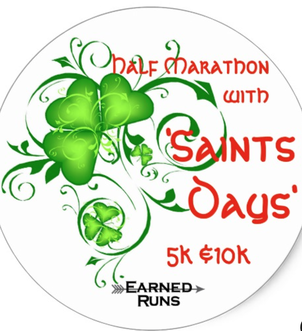
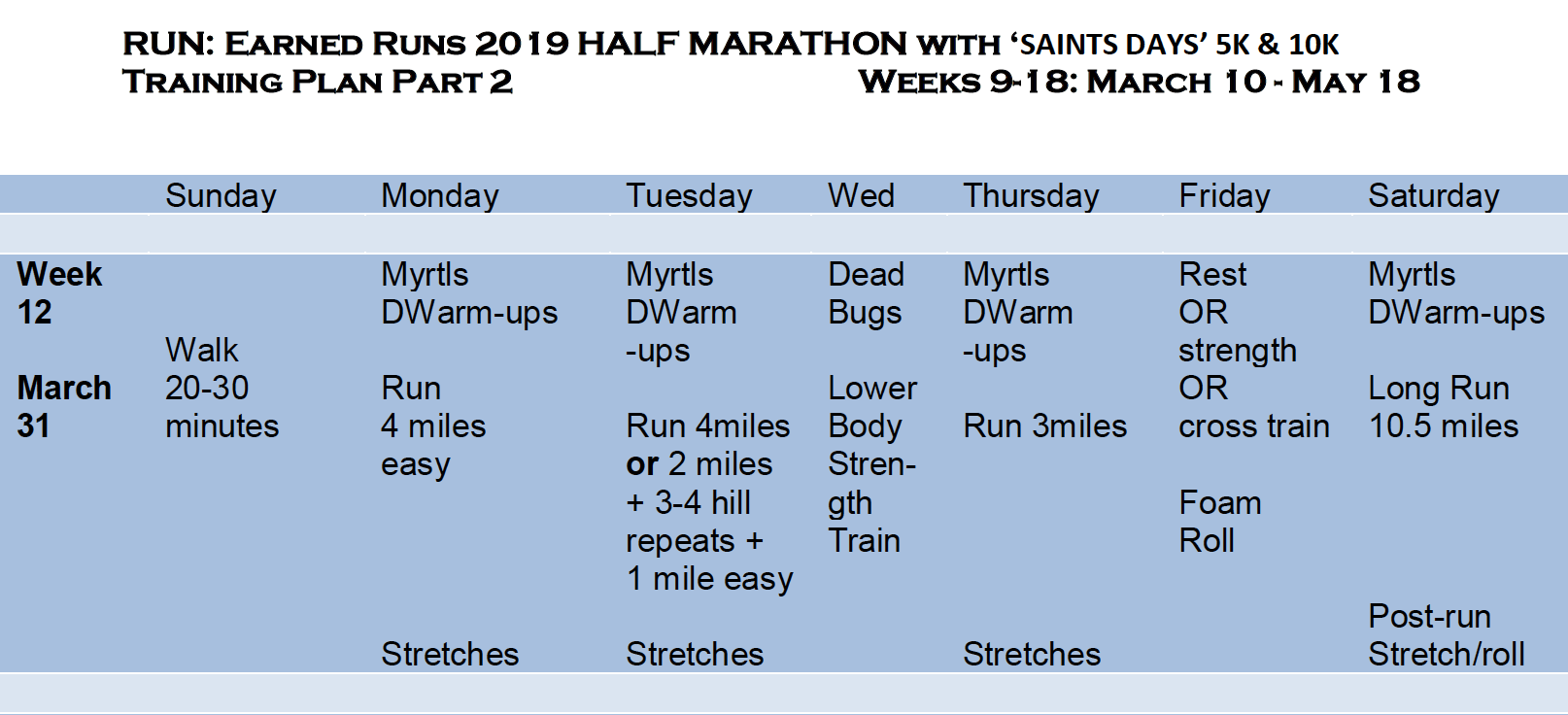
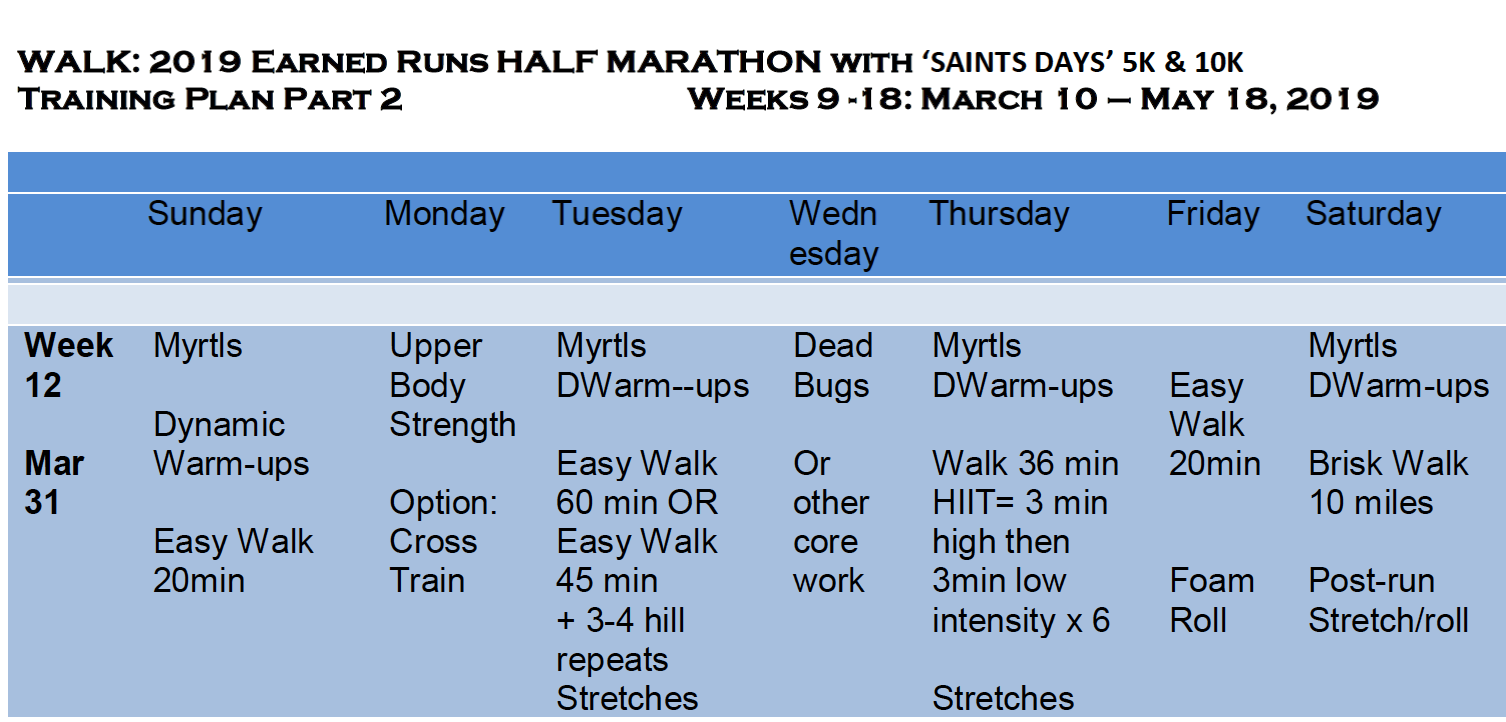



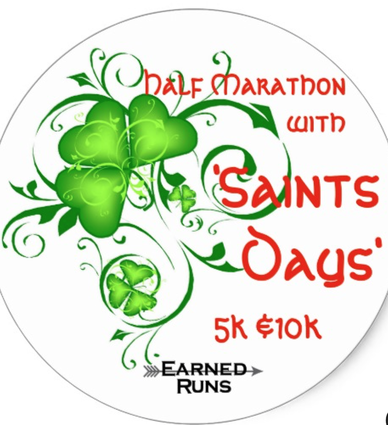
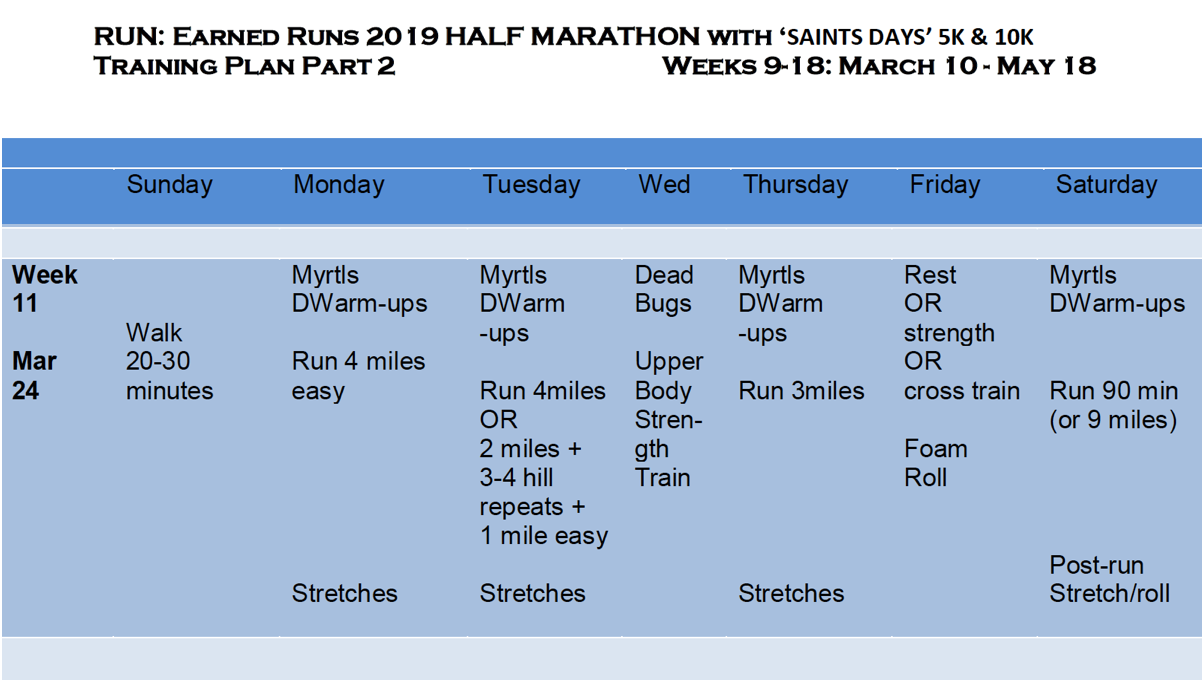
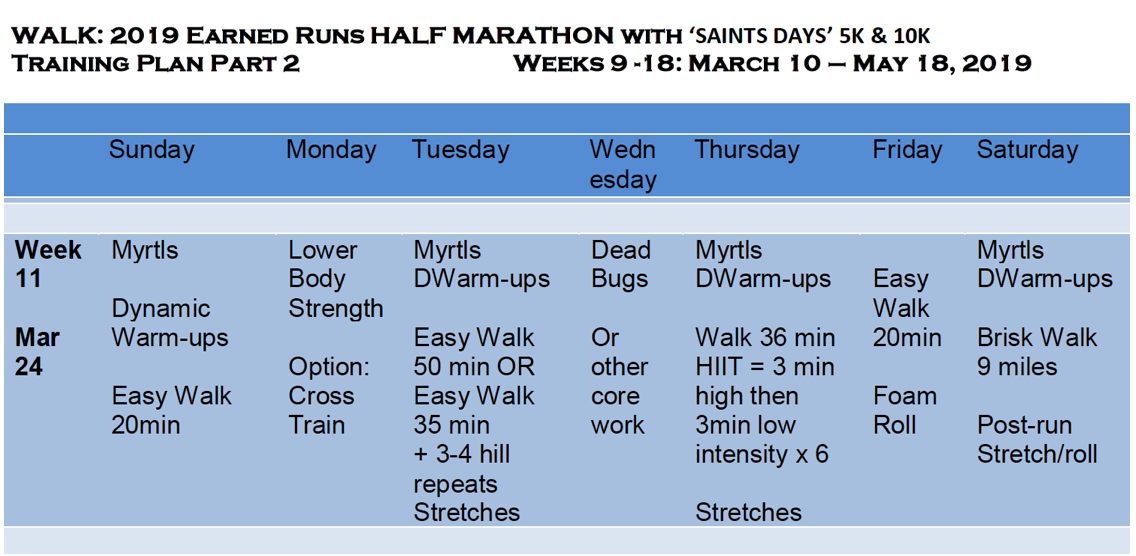
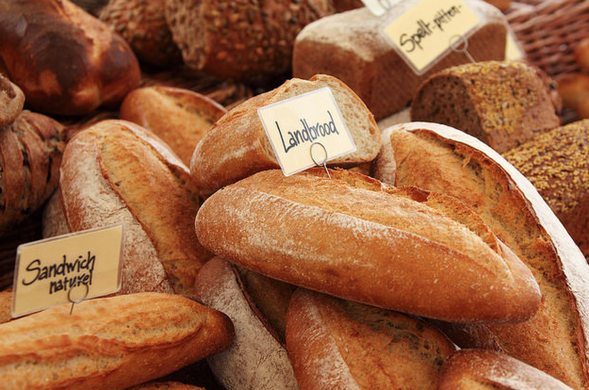


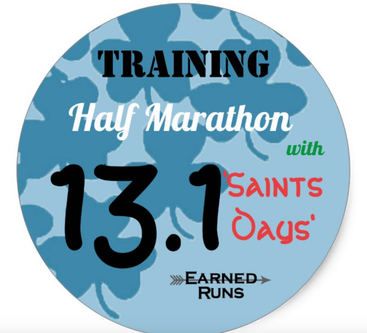
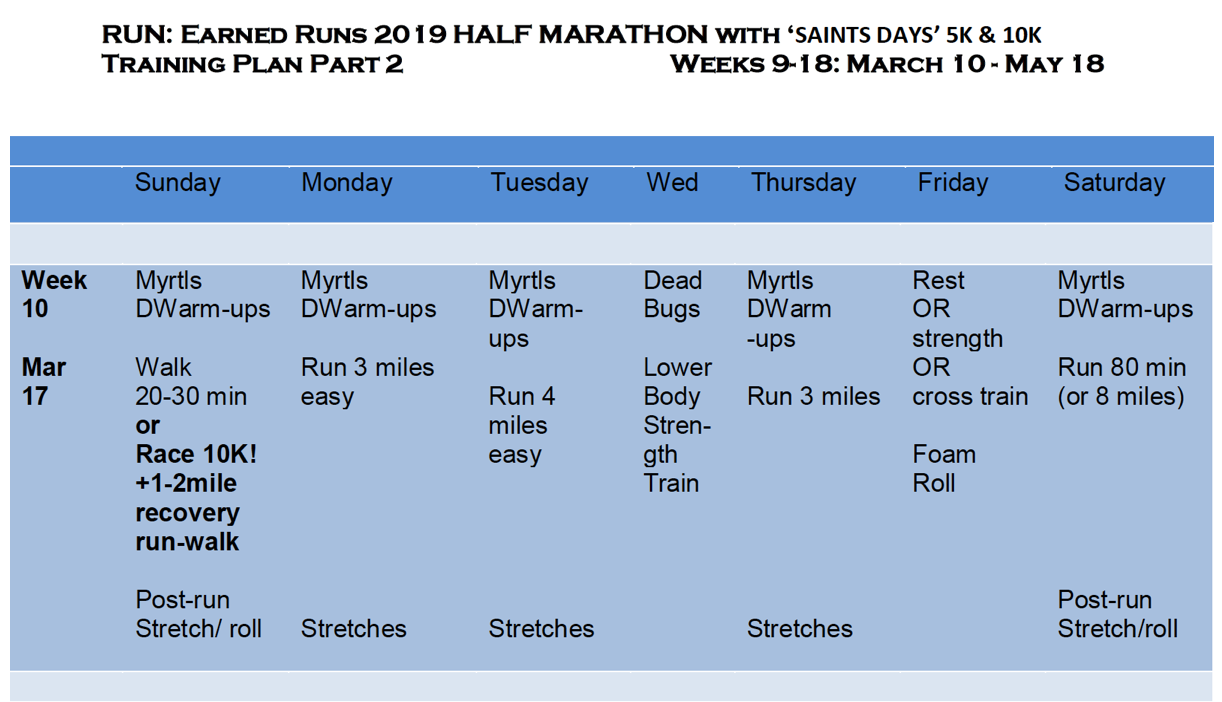
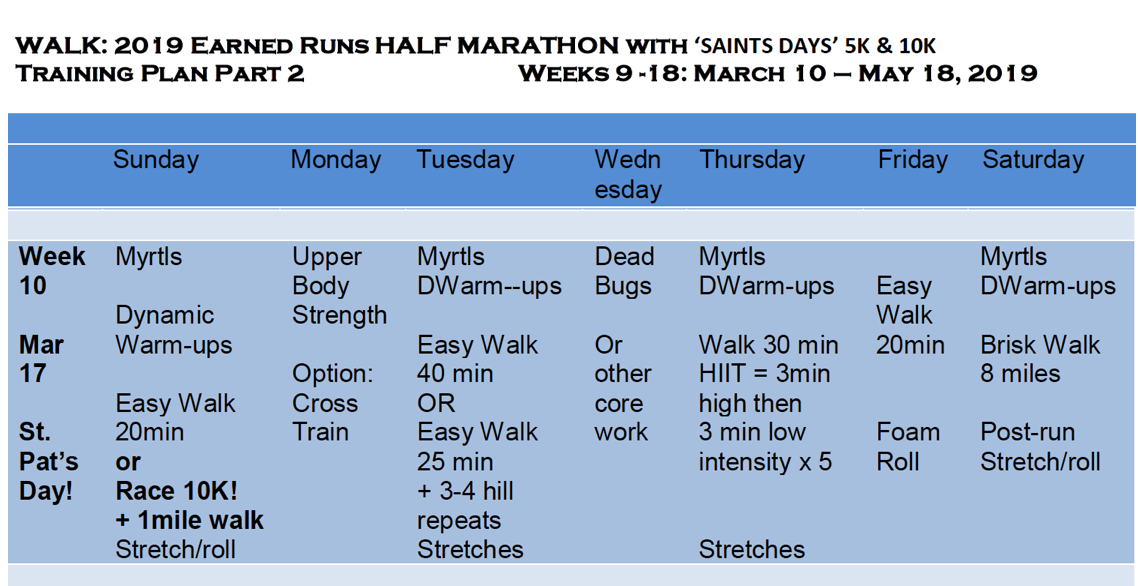
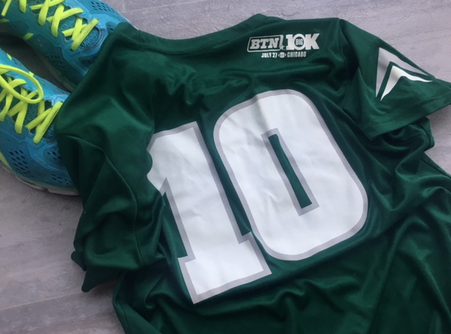

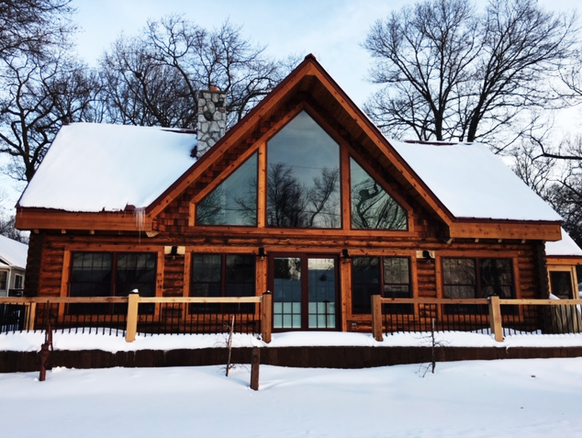
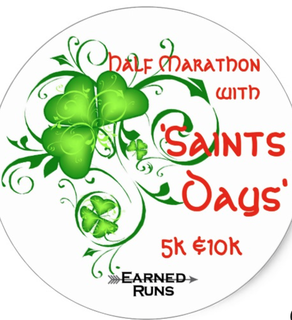
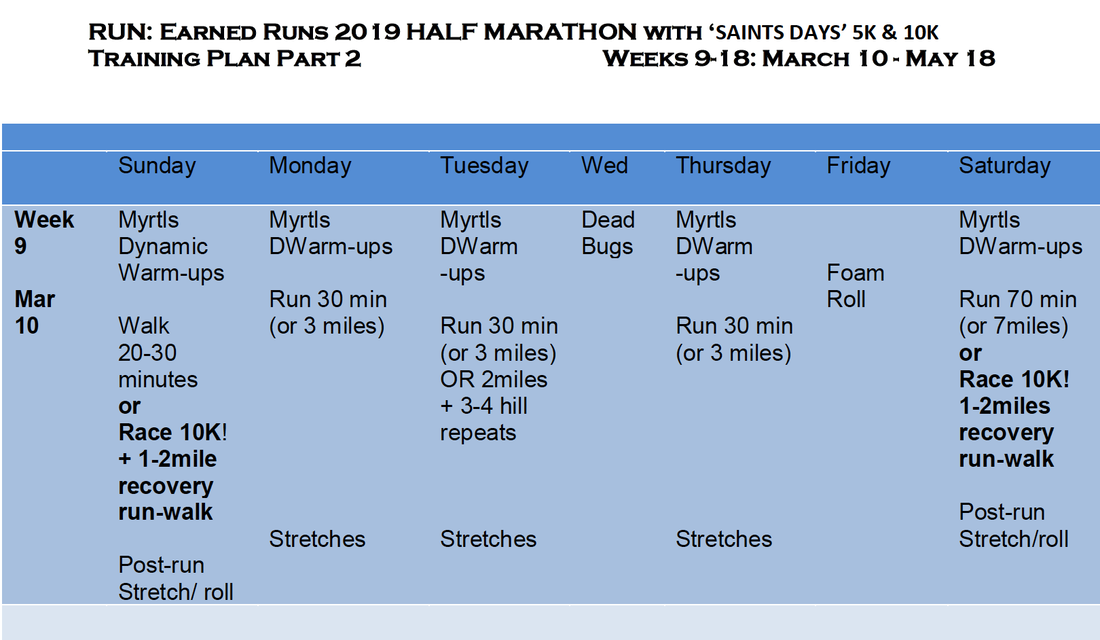
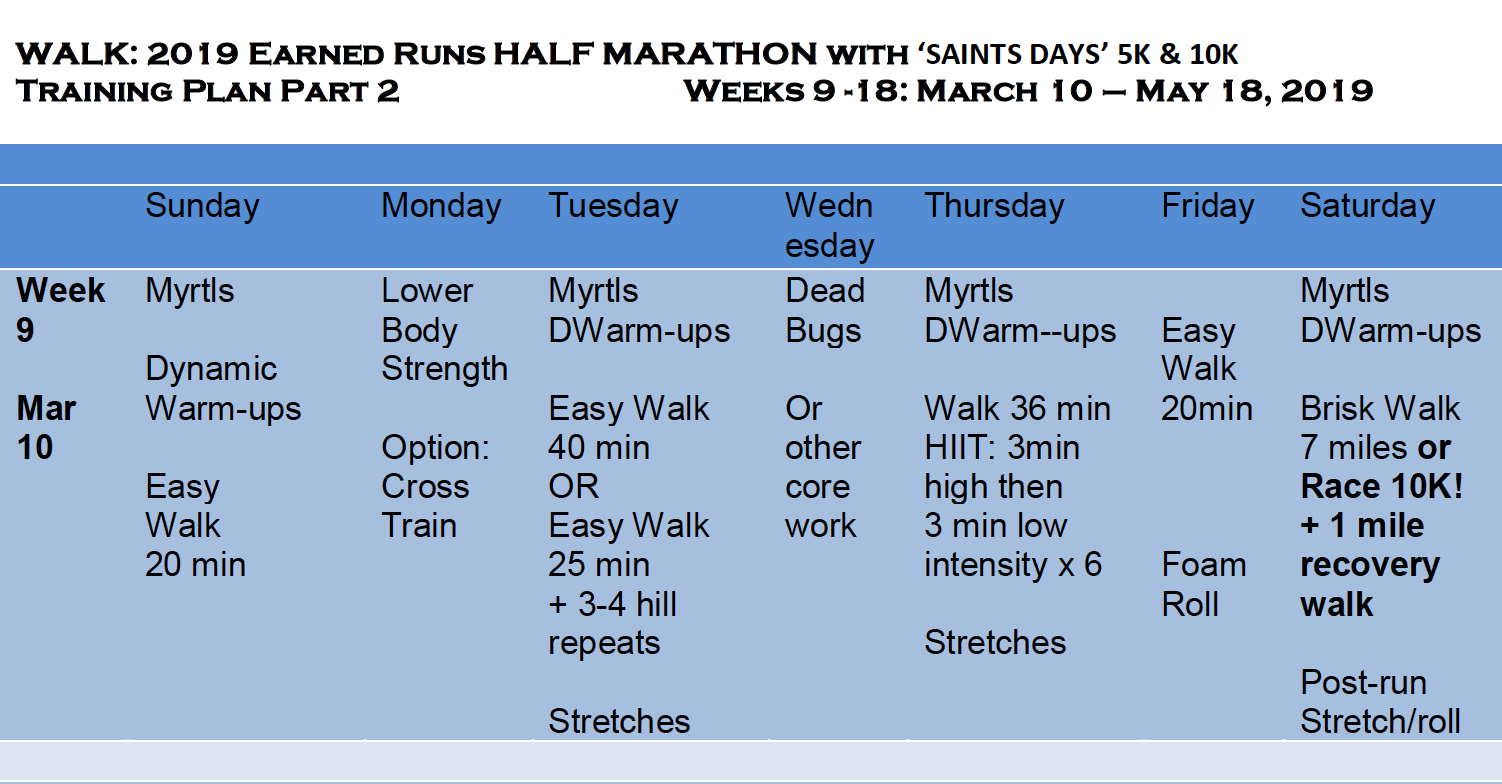


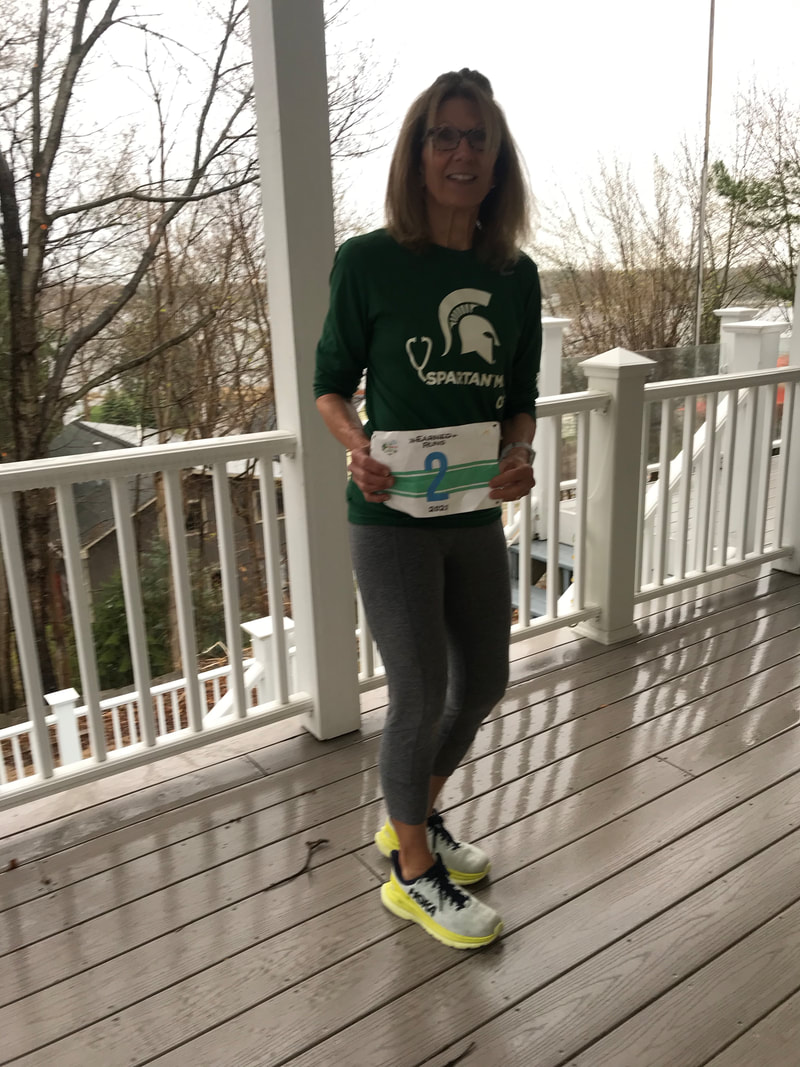
 RSS Feed
RSS Feed